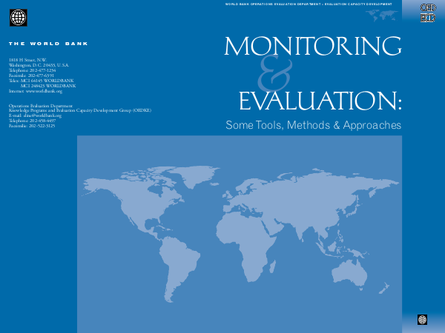
Monitoring and evaluation (M&E) of development activities provides government officials, development managers, and civil society with better means for learning from past experience, improving service delivery, planning and allocating resources, and demonstrating results as part of accountability to key stakeholders. Within the development community there is a strong focus on results— this helps explain the growing interest in M&E. Yet there is often confusion about what M&E entails. The purpose of this M&E Overview is to strengthen awareness and interest in M&E, and to clarify what it entails. You will find an overview of a sample of M&E tools, methods, and approaches outlined here, including their purpose and use; advantages and disadvantages; costs, skills, and time required; and key references. Those illustrated here include several data collection methods, analytical frameworks, and types of evaluation and review. The M&E Overview discusses: ? Performance indicators ? The logical framework approach ? Theory-based evaluation ? Formal surveys ? Rapid appraisal methods ? Participatory methods ? Public expenditure tracking surveys ? Cost-benefit and cost-effectiveness analysis ? Impact evaluation
